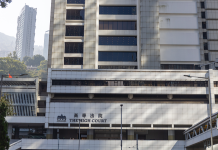XIANYANG: “Compared with wheat, cotton, rapeseed or beans, tomatoes require more fertilizers. Nitrogen, phosphorus and potash fertilizer are all essential. Besides, zinc, boron and other micronutrients can make it grow better. This means that farmers have to spend more to grow it.
However, in recent years, the price of tomatoes in Pakistan has fluctuated very frequently, which is beyond our control. If the price fluctuates too much, the low price will cause farmers to suffer great losses, which greatly affects their enthusiasm, and in turn leads to a subsequent drop in production. Generally speaking, in Punjab, the largest tomato-producing region, April to May marks the start of the tomato high season. But this year, I’m not sure about that,” noted Dr Syed Ahmad, Principal Scientist of Vegetable Research Institute.
Dr Nadar K, Senior Scientific Officer at the National Agricultural Research Centre (NARC), indicated that in Pakistan, tomatoes have a total annual production of around 529,600 tonnes and an average yield of 9.2 tonnes per hectare.
The downward trend in the prices of tomatoes, which are an indispensable part of most of dishes in the country, has been seen in Sindh province since early January. Muzzammil Aslam, Spokesperson to Finance Minister, also noted on January that the price of tomato has fallen to Rs35 at retail in Karachi, the biggest consumer center of the country.
So, what caused it? Reasons for the inequalities are complex. “Although it is the farmers’ decision on what and how much to plant, but at the government decision-making level, we lack an institution, or a system, to provide farmers with policy guidance on a macro level, so as to avoid blindly planting or abandoning a certain crop, which lead to yield fluctuation,” Dr Ahmad emphasized. –Agencies






